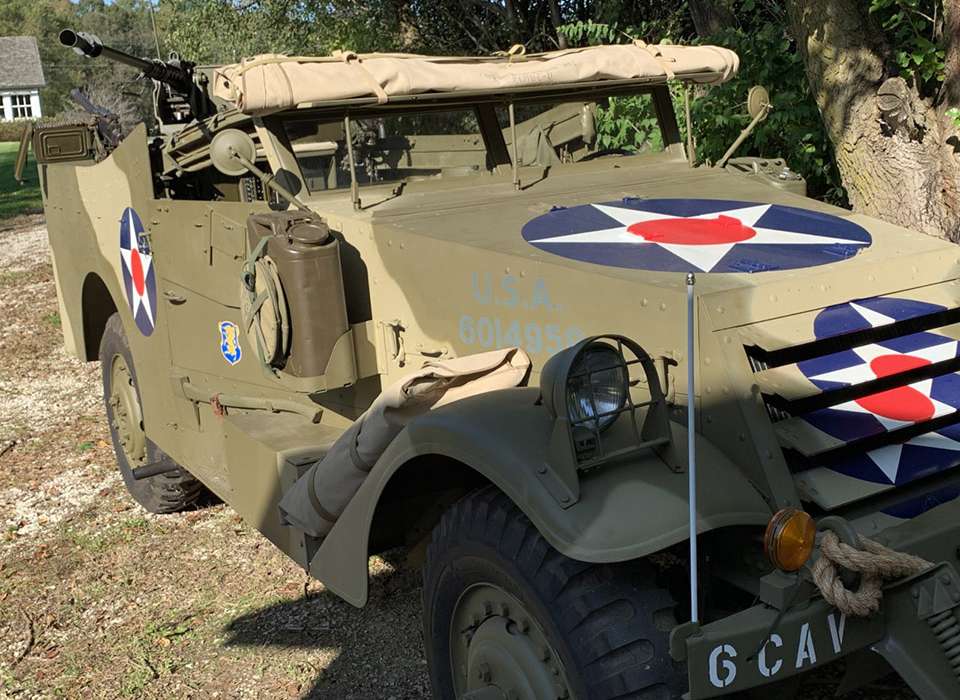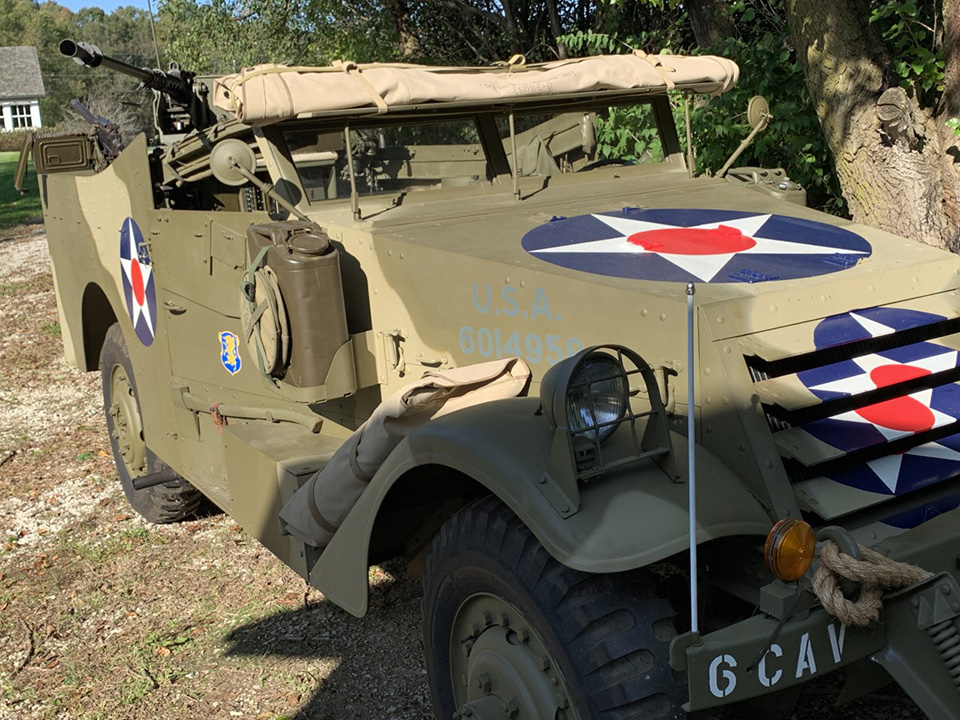Observant visitors at The National WWII Museum will notice that while most American military vehicles are painted with a star insignia, not all the stars are the same. During World War I, American vehicles were typically marked only with ‘US.’ American aircraft sported an assortment of markings, including stars or roundels. In the interwar period, American vehicles began to be marked with stars in a manner similar to aircraft. Typically this was a white star with a red circular center, painted on a blue circular background. Sometimes the colors were reversed, resulting in a blue center on a red background.
In August 1942, regulations were issued that specified a white star as the national marking on vehicles. The red center was eliminated to prevent confusion with the red circle used by the Japanese. Although regulations had been issued, the stars were anything but standard. The problem was of course a desire to distinguish friend from foe, while not attracting too much attention or creating an aiming spot. This conundrum was never completely solved during the war, but not for a lack of trying. During the North African campaign, two major variations were the white star on a blue, or sometimes red circular background. Often these variations appeared on a vehicle that had been painted a lighter sand color. Another variation often appearing on tanks was a star with a four inch wide band running around the turret. This could be painted in white or yellow.
Interestingly, the August 1942 regulations did not specify that ambulances should be painted with the white star. They did specify the red cross commonly seen, but not the stars. Some units followed the regulations and did not apply stars, while most simply decided that every vehicle should be marked, and applied whatever variation of the star was in use at the time. Ambulances can thus be seen in period photographs with and without stars.
The invasion of Sicily would lead to the next major change. In order to avoid confusion between the American star and the German cross, especially at a distance, a yellow circle was painted around the white star. This variation was also used during the Italian campaign. The width of the yellow circle varied considerably from one unit to the next.
For the invasion of Normandy, the yellow circle was changed to white to match the star. Using stencils to paint these stars resulted in so-called “lazy stars or lazy circles,” because of the gaps created in the circle from the stencil. Despite regulations prescribing the appropriate size of stars for specific vehicles, the stars on the top of vehicles were often made as large as possible, with the hope that they would be visible to Allied aircraft and would help prevent friendly fire incidents.
Another variant seen in period photos of the Normandy invasion is a browning color between the star and the circle on vehicle hoods. This was actually a special paint known as Liquid Vesicant Detector M5. If exposed to droplets of mustard gas, this paint would change color from brown to red. This paint was applied in a location that was visible to the driver. During the Normandy landing, ground forces also wore an arm band treated with this paint which would provide a warning of exposure to mustard gas.
The star was also adopted by other western Allied forces in 1944. British vehicles in particular were painted with the star, although it was often oriented with one point down. This “upside down star” served to distinguish allied from American units. Soviet forces used a red star applied to their vehicle to aid in recognition of their equipment.
Actual service provided additional variations. The most common of these was the elimination of the insignia all together. This was authorized when the tactical situation required, with the insignia being covered with mud, painted over or removed altogether. Of course the fact that the insignia was applied by the soldiers of the active unit led to further variations caused by the skill of the painter.
In the end, the star, in one form or another, became a ubiquitous symbol of the allied forces as they liberated Europe.

Shop Talk: Painting the German le IG 18 75mm Infantry Support Gun
Painting a German cannon presents interesting challenges to the restoration staff.
Tom Czekanski
Cite this article:
MLA Citation:
APA Citation:
Chicago Style Citation:



![Max Fuchs, New York City cantor, sings as Rabbi Sydney [sic] Lefkowitz, Richmond, VA, conducts the first Jewish services from Germany.](/sites/default/files/styles/max_650x650/public/2025-10/image1.jpg)






